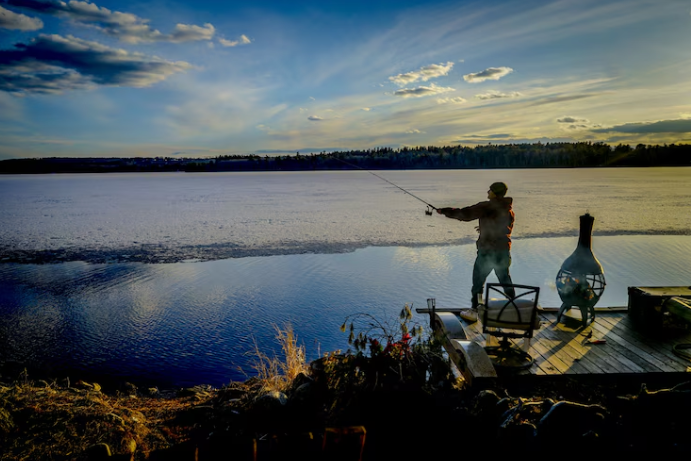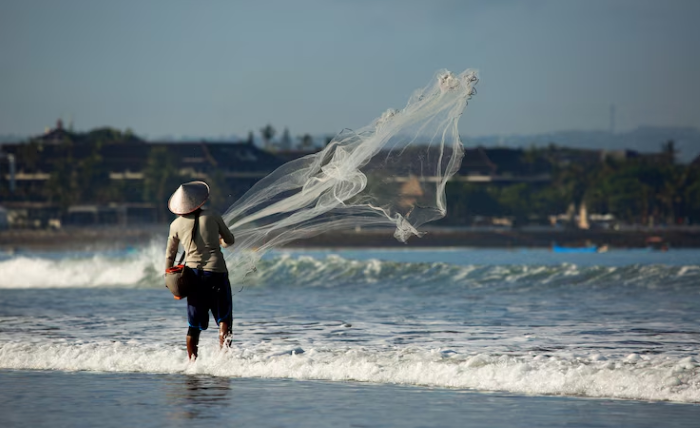Located somewhere along Florida’s beautiful Gulf Coast, Siesta Key is not only recognized due to something more than its fine powdery sand, made of pure quartz crystal, but also considered a destination choice location when it comes to fishing. You may be a professional angler or a first-time rod holder, but the chances of catching prized fish in Siesta Key are plentiful, as the turquoise waters are inviting.
This paper will discuss the fishing environment of the Siesta Key area, the most suitable fishing sites, the most suitable game fish, the different forms of fishing that people can undertake, and some hints towards a successful fishing day in the area. This is your ultimate guide towards understanding why the Florida region can be referred to as the hidden gem that is Siesta Key, as far as fishing is concerned.
A Rich Marine Ecosystem
The position of Siesta Key between Sarasota Bay and the Gulf of Mexico is a preferred environment for a great number of fish species. The mixed habitats (salty and brackish) create a diverse seashore ecosystem. The ones captured by the angler differ depending on seasons, weather changes, and temperature.
Redfish, snook, sheepshead, mangrove snapper, and speckled trout are the usual inshore catches. Take it offshore, and it gives you bigger fish, like grouper, king mackerel, amberjack, and even sailfish. This kind of experience that involves such an interactive area of fishing possibility is the kind of thing that both locals and Indonesian tourists anticipate throughout the entire year.
Inshore Fishing: Perfect for Beginners
Fishing near Siesta Key is probably the most easily accessible means of enjoying the beauty of nature. An environment full of fish and beautiful views is given because of calm bays, rolling mangrove shorelines, and shallow grass flats.
Light tackle is usually employed, and the fishing is normally stable, perfect for families or someone new to fishing. Gold mine spots to find snook and redfish tend to be Big Pass, Little Sarasota Bay, and the Intracoastal Waterway because the snook and redfish like to congregate near the oyster bars and drop-offs.
Live shrimp and pinfish are usually quite effective, but most anglers also love to use artificial lures or go fly fishing in the flats, too. When temperatures are milder and fish are more active, the best times to cast out your line are usually in the early mornings and late mornings.
Offshore Adventures for the Experienced
Offshore fishing in the Gulf of Mexico will give the individual a chance of catching larger game fish and also for a bigger adrenaline high. Depending on how far you want to run off, you may land grouper, snapper, cobia, mahi-mahi, and even tuna.
To go offshore requires more tackle, special gear, and a order of experience with reefs and wrecks. The waters around Siesta Key have several artificial reefs, which act like magnets to fish. These are sea structures located underwater and provide the tourist with large schools, and it is the best location to run bottom fishing and troll.
Most anglers would take their most enjoyable trips with well-experienced captains who are familiar with the waters and have all the available gear, including safety equipment.
Beach and Pier Fishing
You do not always require having a boat before you can enjoy a fishing trip. The sandy and public piers in Siesta Key present great conditions for on-shore fishing. At Siesta Key, you can cast right into the surf and hook up with pompano, ladyfish, and Spanish mackerel, or use a bridge (Siesta Key Bridge) to haul in pompano, ladyfish, and flounder without ever getting your feet wet.
Anglers are requested to be aware of the flow of tides because the prime surf fishing can be experienced in the fall or on the rise of the tide. The pier fishing can be best, especially in the early morning or dusk, when the fish are closer to the shore and hence come out to feed.
Unless you are under 16 or over 65 or fishing on a guided license trip, shore-based fishing requires a Florida fishing license. You should also research local rules and possession limits to have a legal and sustainable encounter.
Seasonal Fishing Guide
Siesta Key is a source of year-round fishing, and the kind of fish you are likely to get depends on the season.
- Spring: Among the best fishing times, there are active snook and trout, and the initiation of tarpon migration.
- Summer: The tarpons are at their peak in season, particularly May to July. Offshore fishing is even better for mahi-mahi and kingfish.
- Fall: Redfish and snook migrate back to flats; inshore fishing becomes active due to the cooling temperatures of the waters.
- Winter: Sheepshead and black drum are abundant, and grouper and snapper are still fishable to deep-sea anglers.
Adapting your strategy to the season ensures a more productive and enjoyable trip.
Choosing a Local Guide
For those unfamiliar with the area or looking to maximize their time, hiring a local guide or booking a Fishing Charter Siesta Key is a smart choice. Professional captains will also know where the weather has been, where to find the fishing hotspots, and how the fish are behaving, and this increases your chances of catching something by many folds.
A lot of charters can offer all the needed equipment, bait, and fishing licenses. Going it alone, taking a family outing, or gathering a group, in terms of time, the charters can be scheduled accordingly: half-day, full-day, or even unique night fishing trips.
One standout option in the area is Calibrated Fishing Charters, who has earned a reputation for his expertise, friendly guidance, and commitment to sustainable fishing practices. His fishing expeditions usually cater to both new fishermen and fly-fishing veterans and are highly flexible in which method and route are chosen, concerning what is producing the best action on the day.

Eco-Friendly and Sustainable Fishing
With the escalation of tourism and fishing activities on the coast, such as in the case of Siesta Key, resourceful fishing is also becoming significant. Catch-and-release traditions are advocated by many of the local captains, particularly in the case of some species, such as tarpon and snook, which play a crucial role in the ecosystem and must be handled according to the law.
When not harvesting fish as food, circle hooks, minimal handling, and rapid release of fish to the water are promoted by anglers. Adhering to the bag limits and size is the way to preserve fish populations that may be enjoyed by the next generations.
What to Bring
When you are going on your own or going on a charter, there are a few basic items you can add to your travel that will make your experience better:
- Sunscreen and a hat (the Florida sun is no joke)
- Polarized sunglasses for better water visibility
- Water and snacks
- A cooler (for your catch or refreshments)
- Light, breathable clothing and non-slip shoes
The rods, reels, bait, and licensing will be provided on most of the charters, so it is worth checking in advance so you do not carry excess equipment.
Final Thoughts
Fishing is not only a hobby but also a guide to learning where to witness a Florida sunset and be able to observe the wide variety of marine life in Siesta Key. The variety of possibilities, including beach casting or deep-sea trolling, appeals to all kinds of anglers. Island fishing is easy-going, satisfying, and available throughout the year to those who want catch-and-release action with a trophy tarpon or a first fish with a child.
The next time you are at the Gulf Coast of Florida, do not sit on the coast; instead, buy a rod and have fun with fishing in Siesta Key. You may only make a lifelong memory.


